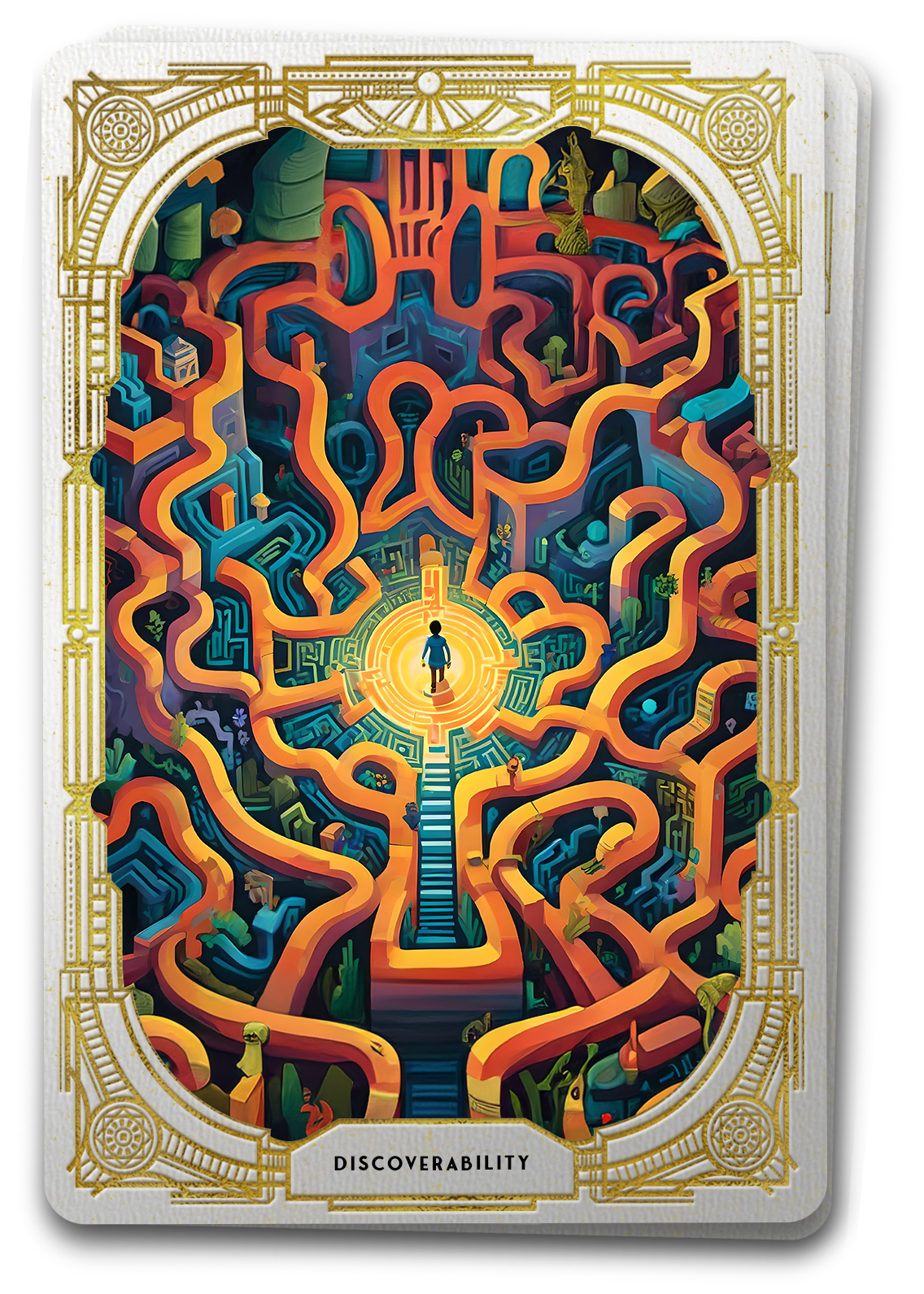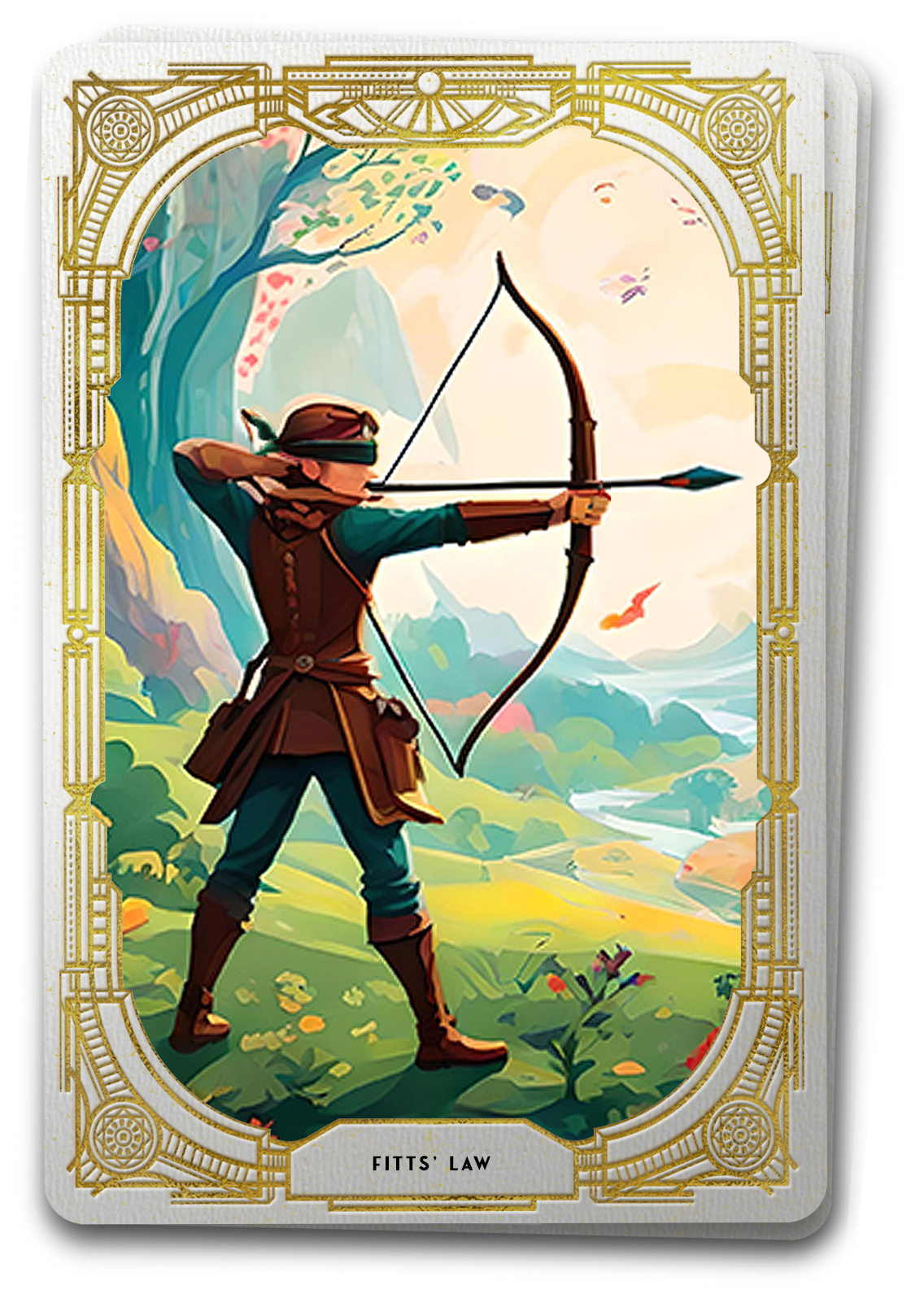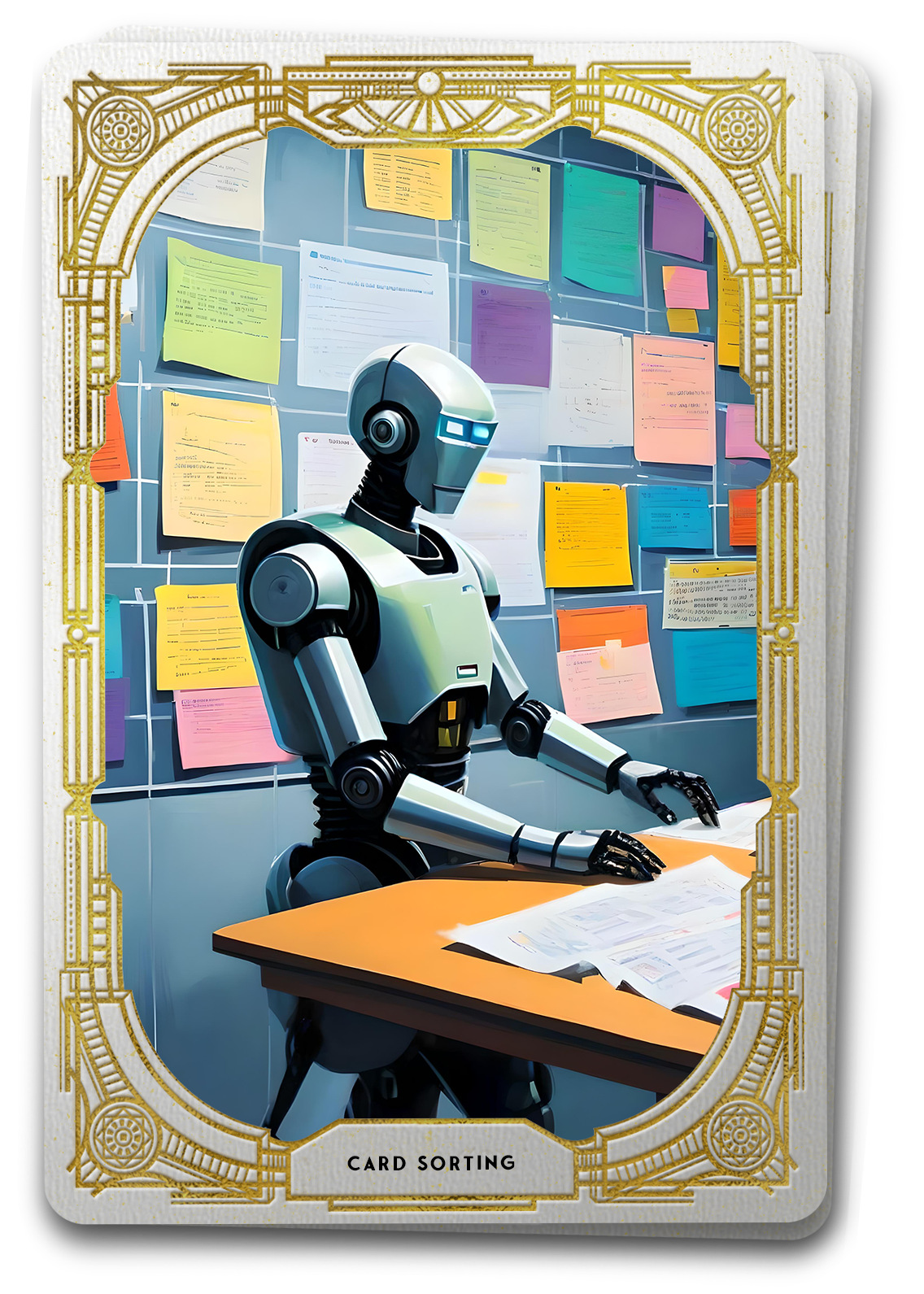
The Tarot Reveals Discoverability:
How easy it is for users to find out what a system does, how it works, and what they can do with it.
Unveiling the Essence of Discoverability in User Experience
Discoverability Defined
Imagine your website or app is a grand library filled with captivating stories and hidden treasures buried deep in the stacks and catacombs of your business. In this landscape, Discoverability is the flickering lantern that guides users through the shelves, unveiling the titles and possibilities within. Just as a well-lit path makes exploring a library enjoyable and purposeful, Discoverability illuminates the digital terrain, allowing users to effortlessly uncover what a system does, how it operates, and the myriad tasks waiting to be explored.
In User Experience (UX) design, Discoverability stands out as a guiding light. It’s not just about finding new content or features; it’s the essence of understanding what a system does, how it works, and the operations available at your fingertips. It’s here we embark on a journey into the core of Discoverability and uncover how it shapes seamless user interactions.
The Foundation: Understanding Discoverability
Affordances:
- Definition: Affordances are cues that indicate the potential actions users can take. Buttons that look pressable or links that appear clickable are examples of affordances.
- Best Practices: Ensure that affordances align with user expectations. Consistency in design elements helps users recognize interactive elements effortlessly.
Signifiers:
- Definition: Signifiers are signals that communicate the presence and functionality of affordances. They guide users by providing visual or auditory cues.
- Best Practices: Use signifiers that are intuitive and universally understood. Icons, colors, and labels contribute to effective signification.
Constraints:
- Definition: Constraints limit the possible actions users can take, guiding them towards the intended interaction paths.
- Best Practices: Employ constraints judiciously to prevent unintended user actions. Clearly communicate restrictions to avoid confusion.
Mappings:
- Definition: Mappings establish the relationship between user actions and system responses. They create a logical connection, allowing users to predict outcomes.
- Best Practices: Design mappings that align with user mental models. Intuitive mappings enhance user predictability and ease of use.
Feedback:
- Definition: Feedback provides information about the outcome of user actions. It acknowledges interactions, helping users understand the system’s response.
- Best Practices: Offer immediate and clear feedback. Visual, auditory, or haptic feedback enhances the user’s sense of control and understanding.
Discoverability vs. Findability
While Discoverability focuses on the user’s ability to uncover what a system does and how it works, Findability hones in on locating specific content or features within a system. Discoverability lays the groundwork, ensuring users can seamlessly explore and understand the system. Findability takes it a step further, emphasizing the efficiency of locating precise elements within that system.
The Interplay
Discoverability sets the stage for Findability. A system might be filled with valuable content, but if users can’t discover it easily, the efficiency of finding specific items diminishes. The interplay between these concepts ensures a holistic user experience—where users not only uncover the richness of a system but navigate it with precision.
Elevating UX through Discoverability
Integration with UX Theory:
- Connection: Discoverability intersects with foundational UX theories such as Jakob Nielsen’s 10 Usability Heuristics and Don Norman’s Design Principles. It enhances the visibility of system functionalities, aligning with the principles of intuitive design and user control.
Synergy with UX Methods:
- Application: Discoverability plays a pivotal role in usability testing and user research methods. Insights into how users discover and interact with features guide iterative design improvements, ensuring optimal discoverability.
Harmony with Interaction Principles:
- Alignment: Interaction principles like Fitts’s Law and Hick’s Law find resonance in the realm of discoverability. Intuitive affordances and well-designed mappings contribute to efficient user interactions, aligning with these fundamental principles.
Integration with Psychology Concepts:
- Alignment: Cognitive psychology concepts, such as mental models and recognition patterns, align with the core of discoverability. Crafting interfaces that match user expectations leverages psychological principles for a more intuitive experience.
Nurturing Discoverability: Practical Insights and Actions
Evaluate and Optimize Affordances:
- Action: Conduct usability testing to evaluate the effectiveness of affordances. Optimize design elements to enhance clarity and align with user expectations.
Interactive Signifier Refinement:
- Action: Regularly refine signifiers based on user feedback and evolving design trends. Ensure that visual and auditory cues remain relevant and universally understood.
User-Centric Mapping Design:
- Action: Incorporate user feedback and behavior data to refine mappings. Prioritize user mental models when designing connections between actions and system responses.
Real-time Feedback Enhancement
- Action: Enhance real-time feedback mechanisms to provide instant and informative responses. Utilize a multi-modal approach, combining visual, auditory, and haptic feedback for a comprehensive user experience.
Leveraging Discoverability for Enhanced User Journeys
When considering the full tapestry of your digital experience, the significance of Discoverability transcends mere navigation; it becomes the cornerstone of user empowerment. Discoverability is not just a design principle—it’s a user-centric philosophy.
Elevating your platform’s Discoverability is an investment in user journeys—a commitment to providing clarity, intuition, and purpose in every interaction. By nurturing this cornerstone principle, you transform your digital landscape into an accessible and welcoming space where users navigate with confidence and joy. As you embark on refining your interfaces, consider the lantern of Discoverability as a beacon guiding users through the vast digital terrain, ensuring each encounter is a meaningful and enriching chapter in their digital story.





